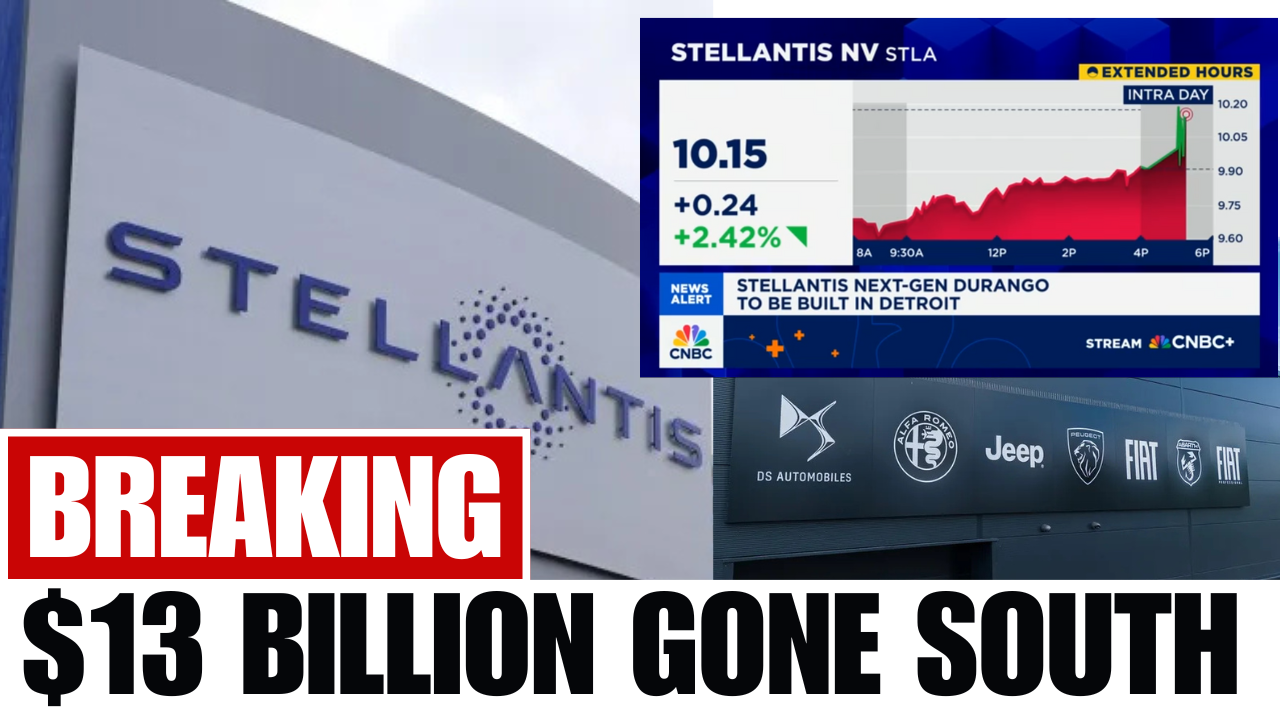Quick Takeaways
- Stellantis is investing $13 billion in U.S. manufacturing to expand Jeep, Ram, and Dodge production.
- Over 5,000 U.S. jobs will be created across Michigan, Illinois, and Indiana.
- Canada’s Brampton plant faces 3,000 layoffs as retooling remains on hold.
- Tariff threats and U.S. tax incentives heavily influenced the company’s decision.
- Consumers in Canada may see higher prices and longer wait times for new vehicles.
Table of Contents
What Happened
Stellantis, parent company of Jeep, Dodge, and Chrysler, announced a massive $13 billion investment in the United States. The plan includes new production lines in Michigan, Indiana, and Illinois—creating over 5,000 jobs and boosting U.S. output by 50%.
At the same time, its Brampton, Ontario plant remains idle. Retooling has been paused, leaving 3,000 workers without clear answers. The shift follows renewed trade tensions and a proposed 25% tariff on Canadian-built vehicles.
The Fallout in Canada
For Canada’s auto sector, this move hit hard. Union president Lana Payne called Brampton “ground zero for our industrial economy.” The loss of Jeep Compass production has put thousands of families in limbo and raised questions about Canada’s competitiveness in future EV and hybrid manufacturing.
Both federal and provincial leaders say discussions with Stellantis continue, but so far, no commitments have been made. Each day the plant stays quiet, the pressure grows.
Inside the U.S. Expansion
In America, the story is much different. Stellantis is retooling factories in Detroit, Kokomo, Belvidere, and Warren to produce new Jeep and Dodge vehicles, including hybrids and range-extended EVs. CNBC reports Jeep and Ram remain the company’s “bread and butter,” accounting for most of its U.S. profits.
The goal: reclaim lost ground in the U.S. market, where Stellantis sales have fallen from 2.2 million in 2018 to just 1.3 million last year.
The Politics Behind It
This isn’t just about economics—it’s about leverage. With Donald Trump’s proposed 25% tariff on Canadian-made vehicles, building in the U.S. simply became cheaper and safer. Add billions in U.S. manufacturing tax credits, and Canada couldn’t compete.
Ontario Premier Doug Ford called the situation “economic blackmail,” while Unifor accused Stellantis of “sacrificing Canadian jobs on the Trump altar.” Whatever you call it, the politics are reshaping where cars get built.
What It Means for Drivers
Consumers will feel this too. Expect fewer Canadian-built vehicles, longer delivery times, and potential price hikes. The U.S. will prioritize its domestic market first, leaving Canadian dealerships fighting for inventory. EV adoption could also slow north of the border if production shifts permanently south.
The Big Question
Thirteen billion dollars moved south. Five thousand jobs gained. Three thousand lost. The Stellantis shift isn’t just a corporate decision—it’s a glimpse into how politics now decide the future of manufacturing.
Was this inevitable—or could Canada have fought harder to keep its auto industry alive?
At-a-Glance Checklist
- Track how trade policies affect local manufacturing jobs.
- Compare pricing on U.S. vs. Canadian-built models.
- Watch for EV incentives shifting south of the border.
- Stay updated on Brampton plant developments.
Tools & Resources Mentioned
FAQs
Why did Stellantis move production to the U.S.?
Stellantis shifted production to the U.S. largely due to tariff threats, tax incentives, and political pressure. A proposed 25% tariff on Canadian-built vehicles made it cheaper to manufacture within the U.S., especially with federal credits and subsidies supporting domestic production.
How many jobs are affected in Canada?
Roughly 3,000 workers at the Brampton, Ontario plant are currently laid off, with as many as 20,000 more indirectly affected through suppliers, logistics, and service industries tied to the facility.
Will this raise vehicle prices in Canada?
Yes. With fewer Canadian-built vehicles and higher import costs from U.S. plants, Canadian dealerships may face longer wait times and higher prices on popular Jeep and Dodge models.
Is Jeep keeping Stellantis profitable?
Yes. Jeep — along with Ram — is responsible for the majority of Stellantis’ profits in North America. These brands are central to the company’s $13 billion U.S. investment plan aimed at reviving its market share and profitability.
Stay Informed
If you found this breakdown helpful, subscribe to CarTipsHQ on YouTube for more deep dives into the business behind the cars you drive. And tell us below: Did Stellantis protect its profits—or sell out Canada’s workers?


Comments are closed